The Japanese nationals have long believed that there are eight million "kamis" [deities] residing in everything, existing or not. Matsuri [festivals] are held to express gratitude to nature and the gods, to enjoy life, and to foster community throughout the year.
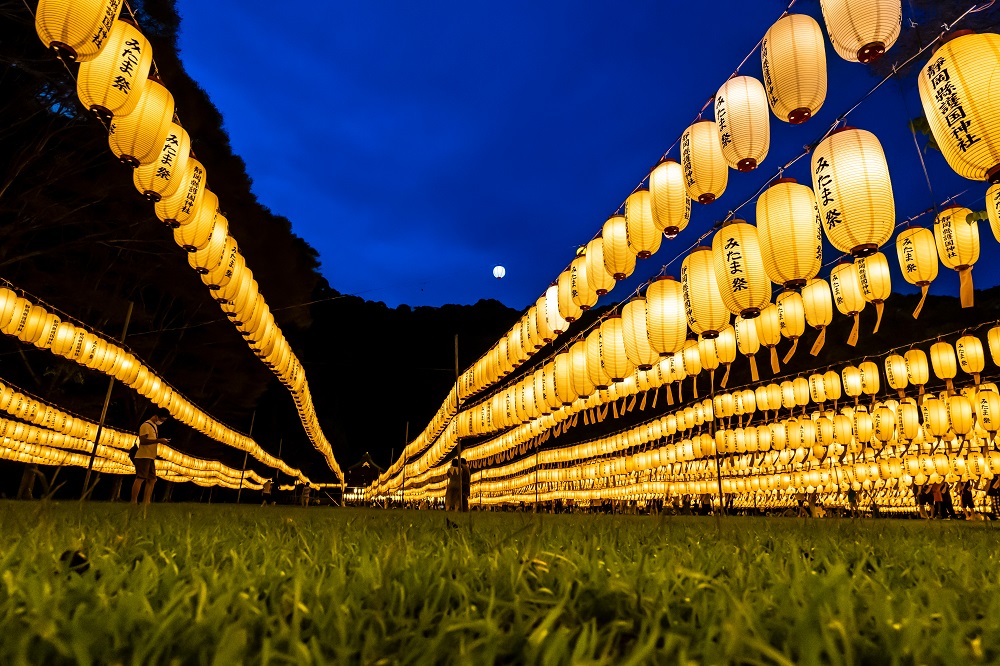
Initially "Matsuri" [festivals] had a strong religious element, to worship the "kamis" [deities]. As the time went by, external factors like introduction of Buddhism were incorporated and gradually became deeply rooted in daily lives. A variety of Matsuri [festivals] are held in many ways as to offer offerings to ancestors, to thank the "kamis" [deities] and Buddha, to pray for a good harvest, to ward off epidemics, to plead for peace, and more.

Matsuri [Festivals] are often related to seasons. Festivals in spring are associated with planting rice and praying for a good harvest of crops or a big catch in the fishing industry. Summer holds many religious events related to Obon [the period when the deceased and ancestors are said to return from the afterlife], and many large-scale Matsuri [festivals] are held throughout the country. Matsuri [festivals] in autumn and winter are held, to give thanks to the harvest, and even the foreign origin Halloween and Christmas are celebrated. Encounter a variety of festivals anytime of the year.
An important element of Japanese festivals are parades, in which the kami [deity] of the local shrine is carried on the shoulders by Mikoshi [portable shrines] through the town. It is the only time of the year when the kami [deity] leaves the shrine to be paraded around the town. The floats have various names, such as "dashi" "yatai" "hikiyama" or "saisha" depending on the region, and all are large and wheeled, pushed or pulled by the locals. It is believed that the kamis [deities] descend onto the top of the float or sometimes ride on the inside of the float to be entertained with musical performances. The floats are the vehicles of the kami [deity] and should not be touched or ridden without permission. While it is well understood that the visitors would like to participate in the Matsuri [festivals], not by just watching from the sidelines, but the permission is required to participate in the Matsuri [festival]. Because Matsuri [festivals] attracts multitudes, various rules may be applied, of traffic regulations, no-go zones, prohibition of alcohol consumption, and guidelines against loud voices. Simply follow the rules and enjoy the festivities!
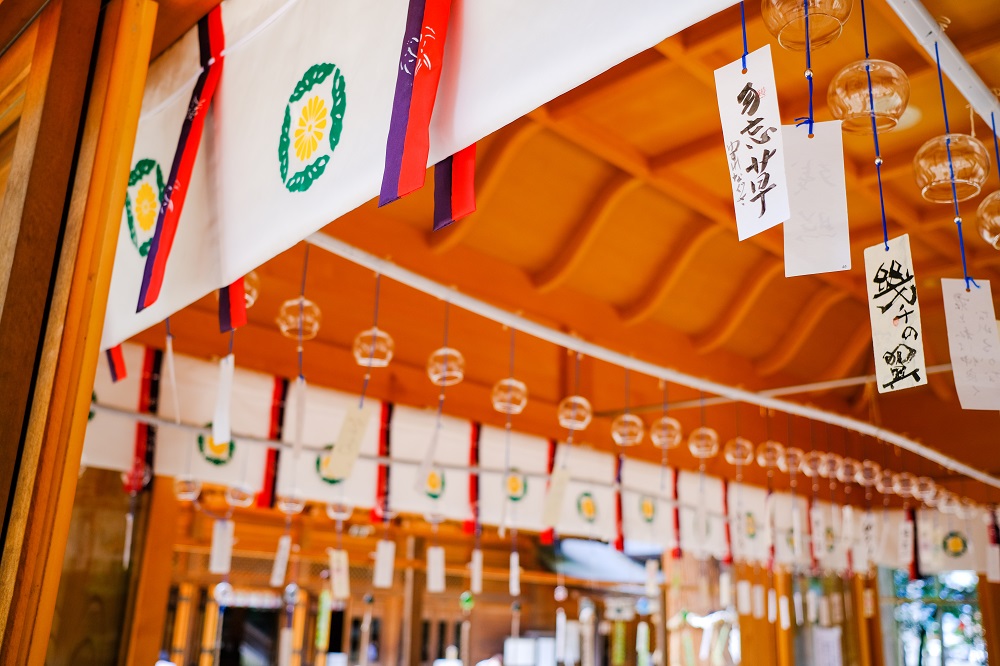
Inuyama Matsuri held in Inuyama City is a celebration held in the castle town area of the National Treasure Inuyama Castle since 1635. It takes place on the first Saturday and Sunday of April. The floats ["yama"] are decorated with magnificent "karakuri" [mechanical dolls], registered as the UNESCO Intangible Cultural Heritage of Humanity.
The Kamezaki Shiohi Festival is held annually on May 3 and 4 in Kamezaki-cho, Handa City. A spectacular event in which five gorgeously decorated floats are pulled down to the beach culminating in a splash in the water, the festival is registered as a UNESCO Intangible Cultural Heritage of Humanity.
The Atsuta [Shobu] Festival of Nagoya City is a solemn festival attended by an Imperial Envoy of the Emperor of Japan and is held annually on June 5 at the Atsuta Shrine. Demonstrations of martial arts and performing arts are dedicated to the kamis [deities], filled with kentou makiwara [light tributes tied with straw] and the fireworks are set off.

The Hamamatsu Festival is a festival of the citizens held every year from May 3 to 5 in Hamamatsu City, celebrating the birth and growth of children with kite-flying competitions. At night, the town is decorated with gorgeous floats called "goten-yatai".
Fujinomiya Festival in the city of Fujinomiya is an annual event held from November 3 to 5 at the Fujisan Hongu Sengen Taisha Shrine, where Ujiko [shrine parishioners] pull floats and stalls to give thanks for a safe year and harvest. The highlights include the heated competition between floats and the lively Fujinomiya music.

The "Onbashira Festival" [officially "Shikinen Zoei Mihashira Taisai" [Honored Pillars Festival]] of Suwa City is held every seven years to renew the shrine sanctuaries and replacing the “Onbashira” [sacred wooden pillars] by selecting the trees, towing the trees down from the mountain, and replacing them within the precincts of the shrine. The “Onbashira Festival” is held roughly in two schedules of “Yamadashi” and “Satobiki”. The “Yamadashi” ceremony is held in April, and sixteen giant (each more than 17m in height and weighing 12 tons) trees are towed by manpower, and the “Satobiki” ceremony is held in May when the trees are towed back to town.
The ”Matsumoto Bon Bon” is the largest summer festival of Matsumoto City held every year on the first Saturday in August. More than 200 groups called "ren" are formed, and a total of 20,000 dancers perform through the central area of the Matsumoto City.
The Takayama Festival is celebrated annually in spring and fall in Takayama City and is registered as a UNESCO Intangible Cultural Heritage of Humanity. The Sanno Festival of Hie Shrine and is held on April 14 and 15, and the Hachiman Festival of the Sakurayama Hachiman Shrine and is held October 9 and 10. There are many highlights of the festival, such as the progress of glittering floats, the karakuri doll dedication, the festival procession with traditional costumes and gagaku [Japanese Imperial Palace Music] playing and the fantastic lantern-lit floats at night.
Gujo Odori is a Bon Odori [dance] festival that has been held in Gujo Hachiman for more than 400 years and features more than 30 nights of dancing from mid-July to early September. The festival tours the entire city during the summer, gracing one venue per night. The last four days of the festival are called "all-night odori [dance]", and the dancing lasts from 8:00 p.m. until dawn.
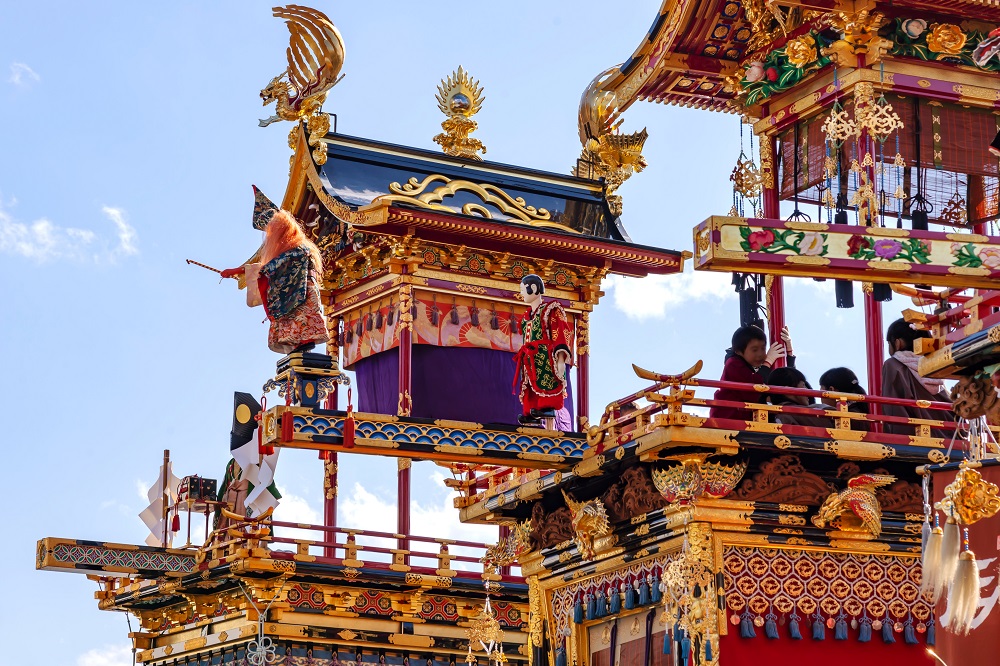
Ishidori Matsuri in Kuwana City is a festival to dedicate stones to Kasuga Shrine and is held every year on the first Sunday of August and the preceding Saturday. At midnight, as many as 40 floats line up around the shrine, beating gongs and drums. The festival is infamously the "noisiest festival in Japan" and is registered as a UNESCO Intangible Cultural Heritage of Humanity.
The Kumano Grand Fireworks Festival of Kumano City has a tradition of over 300 years and is held every year on August 17. It is said that the festival originated when simple fireworks were set off as a memorial service for the first spirit during the Obon Festival, and today, as many as 10,000 fireworks are set off. The fireworks display at the World Heritage Site "Onigajo" is exceptional.
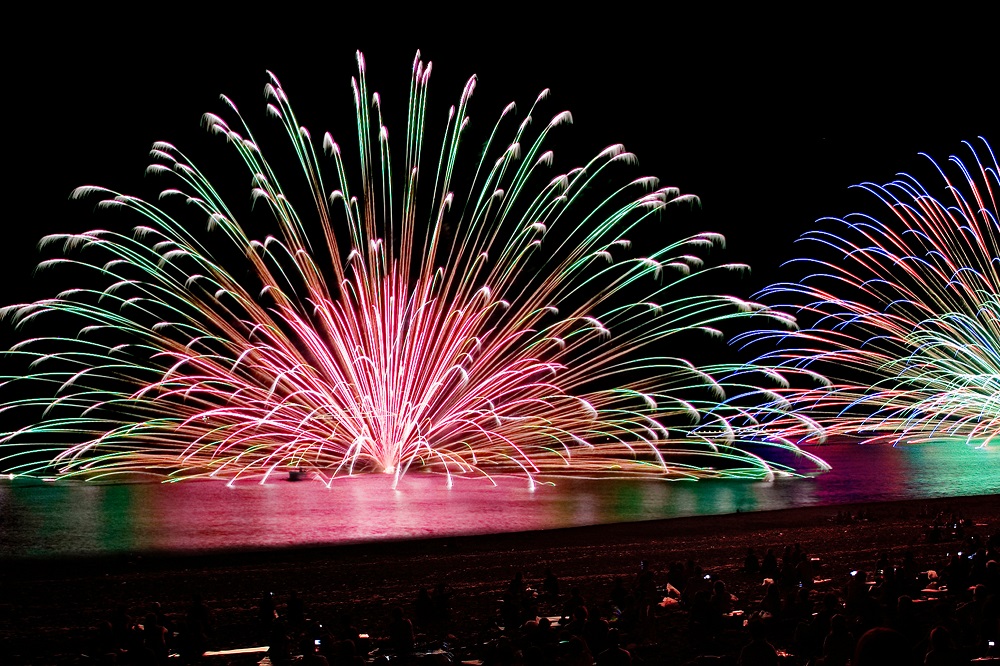
Nagahama Hikiyama Festival of Nagahama City is a festival held annually on April 9 to 17 at Nagahama Hachimangu Shrine. When gold dust was given to the townspeople by Toyotomi Hideyoshi (a feudal lord, one of the 'Three Great Unifiers', who rose to power in the late 16th century) to celebrate the birth of his first son and the townspeople decorated the floats with the given gold dust and paraded around the shrine precincts is said to be the originate of the festival. Now, registered as the UNESCO Intangible Cultural Heritage of Humanity. The children started to perform Kabuki on the hikiyama floats during the Edo Era, and this tradition has continued to this day.
The Otsu Festival of Otsu City is a festival of the Tenson Shrine held every October. The floats, which were created in the Edo Era, feature mechanical karakuri dolls depicting historical events and Noh plays. Additionally, chimaki rice cakes which are purified at the Tenjin Shrine, said to ward off bad luck, are being tossed to the visitors for good luck.
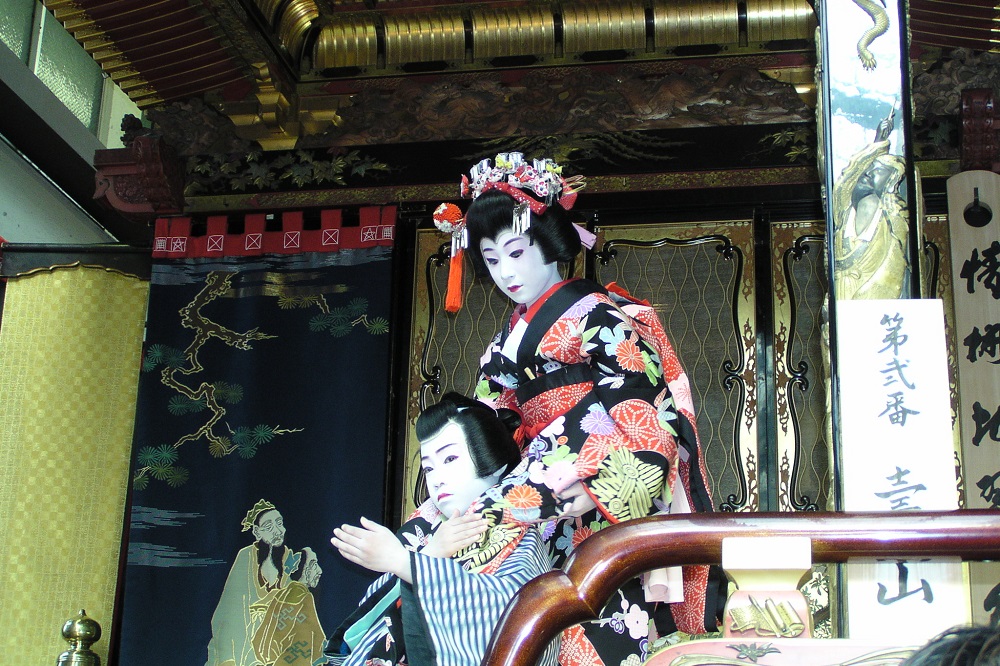
Katsuyama Sagicho Festival in Katsuyama City was originally held as a small event on New Year but is now held on the last Saturday and Sunday of February. The unique Sagicho dance is performed on 12 turrets in the town. On Sunday night, the festival concludes with "dondoyaki", in which the decorations and sacred straw ropes of the New Year are burned the extinguished to send the kamis [deities] on the way with prayers for a bountiful harvest.
Mikuni Festival of Sakai City is one of the three major festivals in the Hokuriku Region, held at the Mikuni Shrine for three days from May 19 to 21 every year. Floats with giant warrior dolls (over 6 meters high) and a procession of the warriors parade through the town.

The Kanazawa Hyakumangoku Festival of Kanazawa City is held at the beginning of June to commemorate the entry of Maeda Toshiie, the founder of the Kaga Clan, into Kanazawa Castle in June 1583. There are many attractions such as the spectacular parade, taiko drum performances, and the acclaimed dancing procession.
Wajima Grand Festival is the customary name for festivals held at shrines in the four districts of Wajima City, which take place over four days from August 22 to 25 each year. Huge lanterns with carrying poles called "kiriko" are paraded through the town.
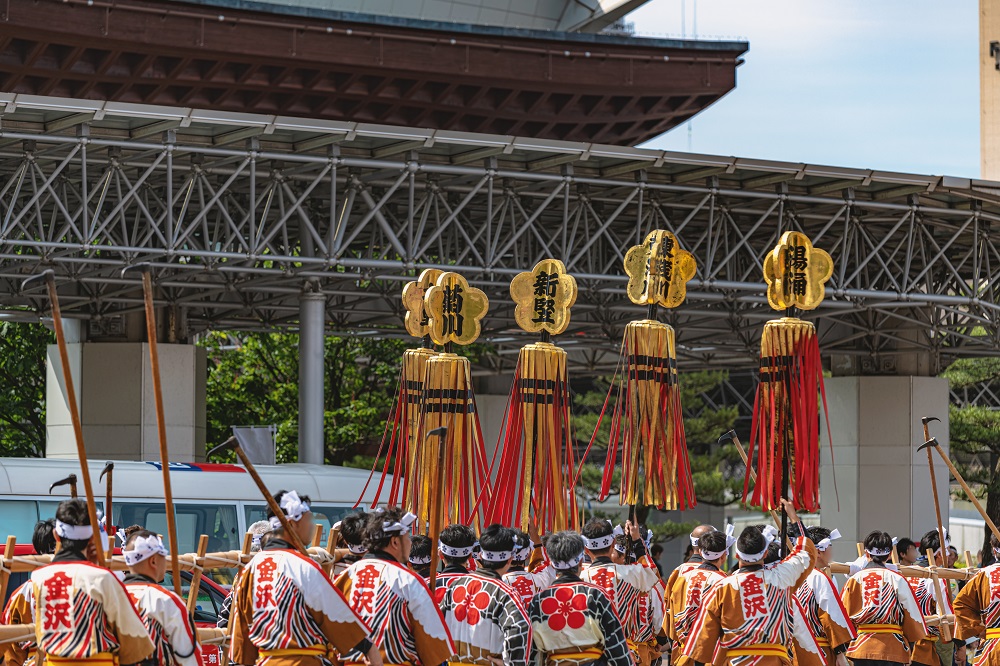
Takaoka Mikurumayama Matsuri in Takaoka City is held every year on May 1. Gorgeous floats decorated with traditional Takaoka crafts parade through the town, featuring the halberd pole weapon standing on top of the goshoguruma carriage. The floats are registered as a UNESCO Intangible Cultural Heritage of Humanity.
The Etchu Owara Kaze no Bon Festival is held in Toyama City every year from September 1 to 3 to pray for a good harvest for the rice plants will not be damaged during typhoon season. Each of the 11 towns perform their own unique and traditional dances to the melancholy owara bushi melody. The beautiful and graceful dances performed to the delicate sounds of the Japanese violin "kokyu" and other musical instruments such as taiko drums are fascinating for the audience.
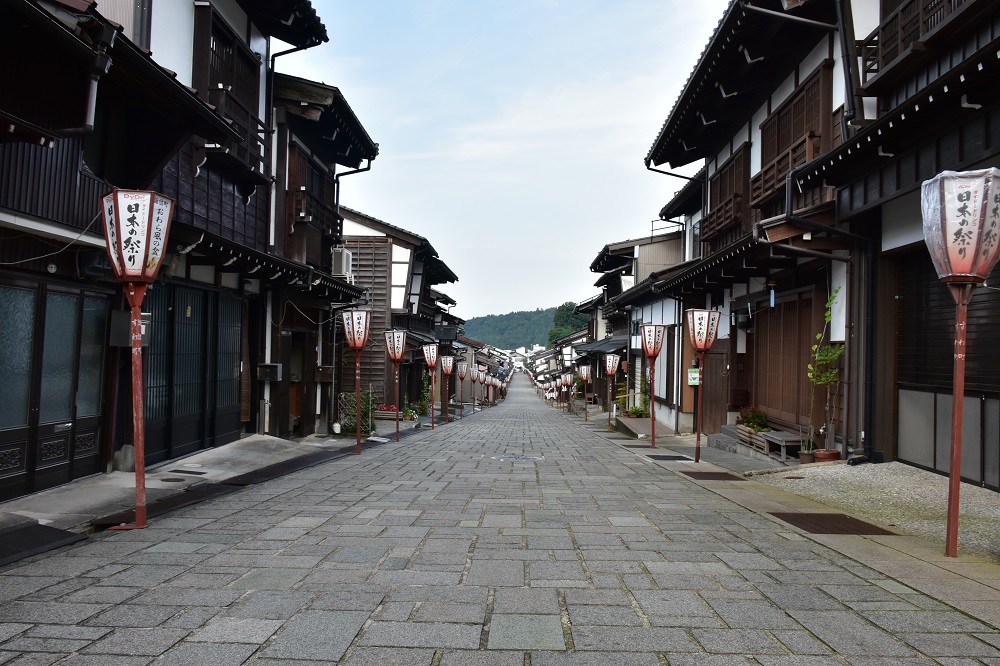
Built in the year 113 (the 43rd year of Emperor Keiko's reign), Atsuta Shrine (Atsuta Jingu) has a history dating back over 1,900 years. As the second most sacred shrine in Japan after Ise Shrine (Ise....
Osu Kannon is one of Japan’s three most prestigious Kannon sacred sites, along with Asakusa Kannon in Tokyo and Tsu Kannon in Mie Prefecture. Founded by Noshin-Shonin in 1324, the main object of worsh....
Atami is celebrated as one of the finest hot spring resorts in Japan. It is said that not only did Tokugawa Ieyasu visit Atami Onsen for a hot-spring cure, but he also had the restoratively gentle spa....
The central area of Takayama City is called "Old Town" and is also known as "Hida's Little Kyoto" due to its well-preserved castle town and merchant town, including restaurants and souvenir stores con....
Located in the northwest of Noto Peninsula, Wajima City in Ishikawa Prefecture has a population of about 30,000 and is blessed with abundant nature and the sea. Wajima is most famous for its Shiroyone....